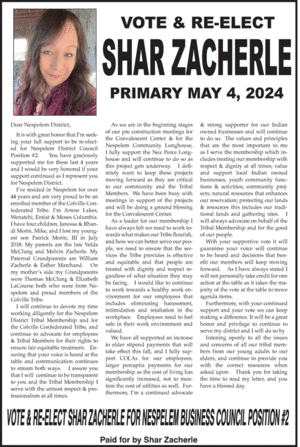Looking ahead and back at our weather
Weather Watcher
Last updated 8/17/2016 at 10:34am
At this midway point in August, it may be time to look into the crystal ball of future weather to see if we can spy winter predictions. There are a few things trickling down that are somewhat intriguing.
First, the Climate Prediction Center’s three-and-a-half-month Long Lead Outlook is showing probable warmer temperatures for the Northwest and above-normal precipitation for Eastern Washington.
Meanwhile, the latest El Niño has all but vanished down in the Pacific Tropical waters. So far, the predictions of it being replaced by a La Niña are being developed. Here is a narrative addressing La Niña: “models have slightly backed off their confidence — from 75 percent to 55-60 percent — that La Niña will occur this fall and winter. While tropical Pacific waters have cooled, the trade winds have not showed the La-Niña-like strengthening needed to amplify cold-water upwelling. The current outlook favors a weak event, but remember: impacts aren’t always tied to event strength.” In very broad terms, a strong La Niña has brought cool, wet, snowy winters to the Pacific Northwest.
So, it may be a little early to point a finger at a healthy winter here in the Coulee. I’ll keep looking at the updates for La Niña and some of those will be posted on the Facebook page.
Let’s take a look at July 2016 temperatures and see what the results were. The all-time mean for July is 73˚F. We had a mean of 71.7˚F, along with a low for the month of 48.8˚F on July 4th. The high temperature was 100.7˚F on the 28th. The all-time low for July was 40˚F, only 16 years ago in 2000. The all-time high was 113˚F back in 1939. We ended up with only nine days at 90˚F or above.
Precipitation for July came in at 0.59 inches. The all-time mean for July is 0.47 inches. Therefore, we benefitted a bit from extra rain. Our all-time high of 2.94 inches occurred in 1993, and the one-day maximum was in 1965 at 1.29 inches.
We’ve got a full moon coming up on Aug. 18. I hope the Moon didn’t interfere with your observation of the recent Perseid meteor shower. I have a friend who saw some of the annual meteor shower from his boat while fishing in the evening. Our friends at EarthSky tell us the following: “All five bright planets were visible in the early evening. You might still catch all five if you look soon after sunset. Mercury and Venus follow the sun below the horizon before nightfall at northerly latitudes. Mars is still a bright beacon, although fainter than Jupiter, still in a noticeable triangle with Saturn and the bright star Antares. Mars and Saturn are out until very late evening at mid-northern latitudes.”
I certainly hope you have taken advantage of the free evening sky programs that rangers at Lake Roosevelt National Recreation Area have been providing locally. Not many small communities have that opportunity afforded them; lucky we are.






Reader Comments(0)